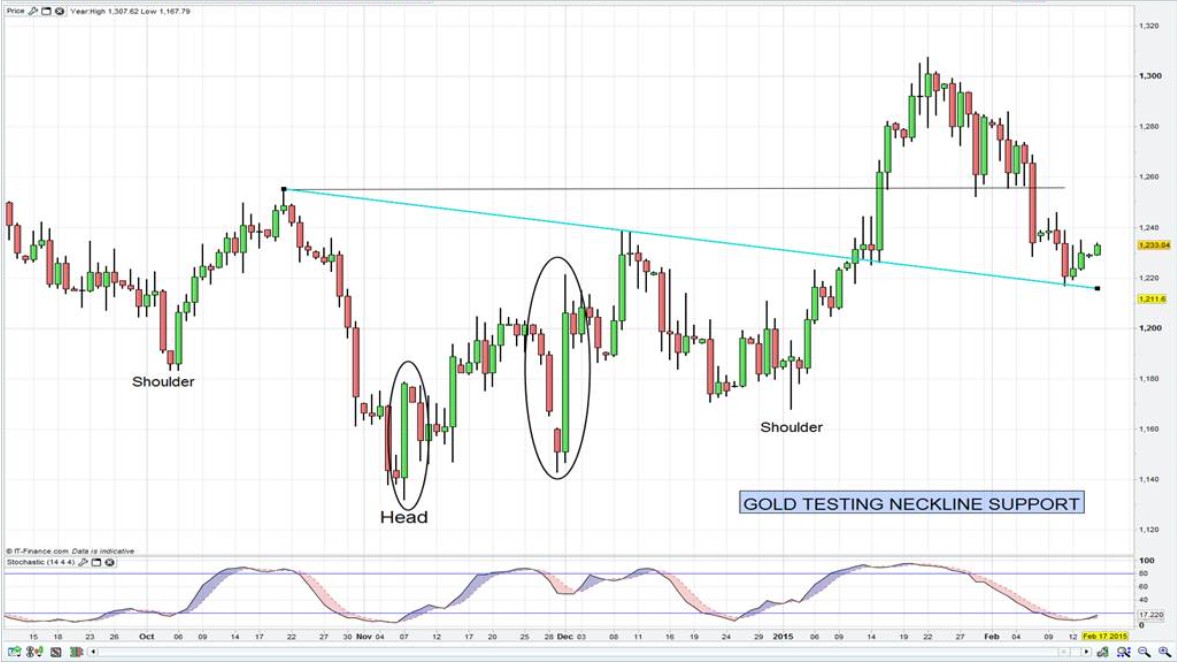Chris Weston, Chief Market Strategist at IG Markets
Being long developed market equites continues to be the right trade, unless of course you think ultra-short-term and scalp the markets.
Being a trend follower is working well in equities, as central bank easing/liquidity have ring fenced macro concerns, while green shoots around global growth have given a real backbone to the risk-on mentality. In the US, the S&P 500 and Russell have achieved new all-time highs despite soft data that should see Q4 GDP being revised down 60 basis points to 2%. A move in the S&P 500 to the uptrend drawn from the May 2013 pivot high at 2150 looks achievable; however when the market is trading on 17 times forward earnings (27 times on a cyclically-adjusted basis), at what stage do valuations become a concern?
My guess is soon, although the time to be aggressively short is not now and my preference is to take a more favourable stance on Europe, Japan and even the ASX 200. The trading case here is on the idea of normalising central bank policy versus easing and liquidity. One can also look at any of these markets on a comparative basis and see that US markets are underperforming. This should continue for now, unless China really shows vulnerabilities that cannot be fully addressed through easing benchmark rates, or if Greece and the European Union fail to agree on compromise, in which case you can choose practically any market (outside of fixed income) and look more favourably at short positions.
The Nikkei breaking out
The Nikkei is breaking out of key resistance around 18,000 and is looking fairly attractive on a comparative valuation basis at 13.6 times forward earnings. What’s more, we are in the midst of wage negotiations, with unions calling for 3% to 4% wage hikes (above last year’s 2.2% growth). There is also $2.3 trillion in cash sitting on companies’ balance sheets, some 43% above that of US corporates, with good buy backs coming through as well. Today’s GDP print won’t do any harm to the rally either; while growth was well below consensus at an annualised pace of 2.2% (consensus expected growth of 3.7%), the data point wont derail the view that the Bank of Japan will be easing for many years to come, and in reality Japan needs growth above 4.5% for longer-term debt sustainability. The levels of business spending (+0.3%) or private consumption (+0.1%) should even increase the prospects of more needing to be done, although additional asset purchases won’t be announced until the second half of the year.
Japan is also a good way to hedge concern around next week’s semi-annual congressional hearing from Janet Yellen given the correlation between the Nikkei and USD/JPY. One just has to look at the fact that the Fed fund future (December contract) is positioned under the move dovish end of the Federal Reserve’s projections, which suggests there are real risks around increased volatility. The risk is that Fed Chair Janet Yellen will lay a framework for a change in its ‘patient’ language around when rates go up in its 18 March FOMC meeting (05:00 AEDT on the 19 for Australian traders); in turn we could see a rapid and aggressive shift in market expectations. The likely reaction here is a new leg up in the USD, in turn bringing out gold sellers, with the US two-year treasury breaking above the driving the show.
If we look at gold, the technical set-up is looking actually quite compelling after having rallied off the former neckline of the inverse head and shoulders pattern at $1216 last week. The gold bulls will want to see a move back above the 21 October high of $1255.32 and from here I would not be surprised a new assault on $1300, although my preference is along the lines of a less conventional set-up and I would look at long silver/short gold as a pair’s trade. I still believe the current ratio of 1:71 (i.e. it takes one ounce of gold to buy 71 ounces of silver) will fall closer to 60 this year.
(Daily chart of spot gold)

Emerging market nations watching Janet Yellen’s testimony
I am also keen to explore the impact on emerging markets if Janet Yellen lays the foundations for a clear change in its March FOMC meeting. The reaction here could be fairly severe given the huge increase in USD-denominated debt issues over recent years; however how China reacts is of specific importance. Importantly, the spread between China’s two-year bonds and US two-year treasuries is driving the USD/CNY at present. As the market sells US bonds (subsequently causing yields to move higher), the discount the US bond market has relative to China decreases, making the USD more attractive, in turn promoting CNY weakness as capital leaves China’s economy. This is also acting as quasi-tightening of financial conditions, which is similar in effect to the falls in inflation, which has increased ‘real’ bond rates (i.e. inflation adjusted bond rates); hence we should see further easing from the People’s Bank of China over the coming months.
Turning to Europe – it’s all about Greece this week; with traders expecting a last minute deal to materialise it’s hardly surprising to see EUR/USD drift higher. The pair has found good selling around the $1.1500 area of late and traders could use spikes here in the short-term to get set for USD upside into Janet Yellen’s testimony. There have been some optimistic signs emerging in European data lately, but Yellen just needs to lay the framework down for a change in the wording in the March meeting and watch the USD fly and the outperformance of Europe and Japan continue in earnest.